#started a small indoor herb garden project
Note
How do you do solarpunk aesthetic week when you live in a tiny apartment with no outside access? I always want to participate but I feel like most stuff y'all post is geared towards people who live in houses...
Hey, thanks for sending in the ask!
We put our heads together and came up with a few ideas for you!
Grow plants indoors! You could grow a few houseplants to green up your space, or even try growing some vegetables and/or herbs indoors! I've heard people have lots of luck with basil indoors, and my freshman year of college I grew cherry tomatoes and peppers in my dorm room! Maybe check out information on semi or full-hydroponic setups? You can also propagate a lot with a few cuttings and a glass of water! If you have a balcony with your apartment, that could also be a good place to grow flowers or vegetables--depending on the season and temps where you are, it might be a bit cold to start things out there right now, but you could always start planning!
Crafting could be another fun idea! You could try your hand at mending clothes, or making your own clothes from scratch! I (Ani) am learning crochet, if you wanna join me in spirit and pick it up as well! Kala/Fennopunk (who lives in a small apartment 👀) also knows a lot about crocheting, its a pretty nice winter craft! You could also try embroidery, so you can add unique designs onto your clothes! Other options are things like knitting, sewing, leatherwork, jewelrymaking, soap making, and maybe even woodworking or soldering if that interests you!
Learning how to repair tech would be cool! Honestly, learning how to repair anything sounds super cool and is pretty solarpunk! This can also kinda go hand-in-hand with learning how to build your own things (one of my friends knows how to repair and build computers, for example). Try finding some information on something you're interested in and going wild!
Decorate your home in a way that feels Solarpunk to you! Even if you don't get it all done during the event week, I think its definitely a nice way to bring joy! Look into ways your apartment can change with the seasons, ways to keep yourself cozy and warm in winter but cool and bright during the summer! If you get started, feel free to send in progress images, we'd love to see!
Guerrilla gardening! Winter's a great time to scatter wildflower seeds (at least here in the states for me) as it gives the seeds time to acclimate to weather conditions! if you want flowers in spring, you plant seeds in winter! Maybe find a place you wanna target if you go out, think about what seeds you want to plant, and start planning? Or if you have seeds on hand already, you know what to do! Honestly, I also kinda view picking up litter as hand-in-hand with guerrilla gardening, if you've got the vibes for that at all.
Build community with your neighbors! Even if its just saying hi, or talking about what you're up to!
Maybe guerrilla art as well? Moss graffiti, spray painting, or even plastering a couple of stickers up counts as solarpunk! I will give a general warning that doing stuff seen as illegal probably shouldn't be posted online, but hey, you can participate in the week without telling us what you do!
Speaking of art! Maybe you could make art at home! Whether you use chalk, or pastels, or paint, or pencils, or if you've got a tablet you can use--find some inspiration and draw! I've seen lots of people draw solarpunk fashion ideas, solarpunk building concepts, or just general vibe art!
You could also take a crack at writing! You could write a short story, or get started on a longer project idea! You could even just write worldbuilding-type stuff, like examples of event listings or building histories you imagine a solarpunk society would have, or ideas for holidays and festivals!
Learning an instrument feels pretty solarpunk to me! I (Ani) say this as someone who has 2 guitars around and has forgotten 80% of the stuff she learned in her lessons back in high school. Just in general, picking up an old hobby you miss, or starting a new one works great for this event honestly!
You can also check out the Apartment Solarpunk tag on the Practical Solarpunk blog, it may have more ideas for you!
We hope this helps! Either way, I hope you enjoy the event week!
#our posts#asks#anonymous#me (Ani) like ages ago: ok im gonna post this at 3pm#me at 3:30 am 4 days later: FUCK I NEVER POSTED IT#i know at this point the event is nearly over and I'm sorry i didnt post this in time#but i hope it helps inspire you to do some solarpunking outside of the event! there's always next summer!#at least im pretty sure we're planning on doing this again next summer....
18 notes
·
View notes
Text
11-17 March 2024


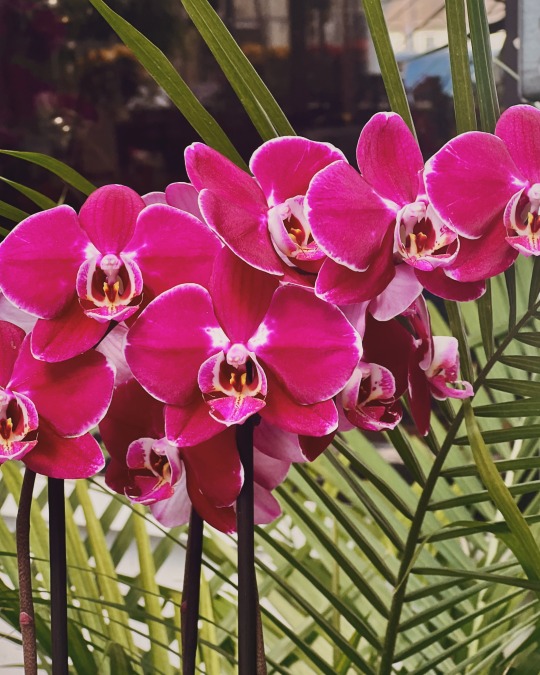

Am reminded why March is one of my favorite months. Everything is in bloom, it's warm and sunny without being too hot or bright or humid; everything feels fresh and new.
Fresh buzz feels soooooo good 🥰 I think it’s a little wonky in the back but that’s okay - as mum always says, “if they look that close, they want to steal it” (which I frankly don’t quite get but. Ok).
Started a new crochet project, a simple small tote bag worked in the round. This was my first time doing anything with double crochet stitches, and it took me a few tries to wrap my head around it. Now that I’ve got the hang of it, the project is really coming along! I like the friction of the cotton yarn, even if it’s not super well twisted and tends to separate on me.
A friend and I made plans to go to a Ren Faire next month! I’ve never been to one so I’m looking forward to the chance to dress up and nerd out.

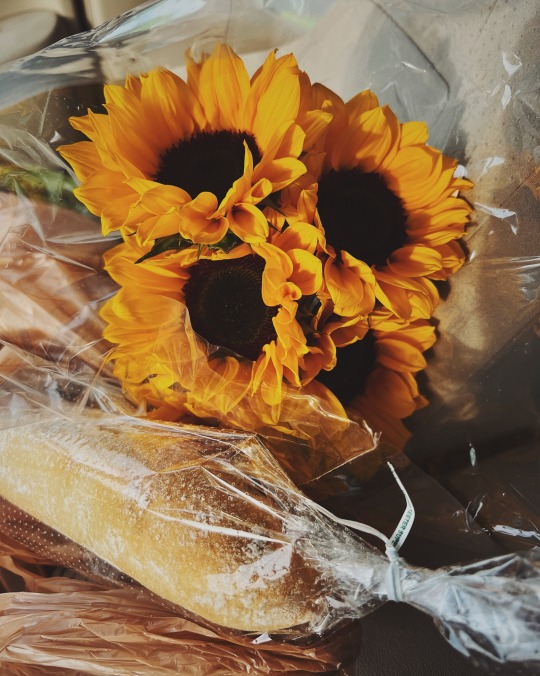

The weather has been so gorgeous lately, I absolutely do not want to spend my days indoors. Went to the greenhouse/nursery on my lunch break one day just to look at all the pretty flowers and herbs and succulents, and to wander around the outdoor garden center. Another day ducked out with a work friend to get gelato at the shop down the block from my office and took our time soaking up the sun before we had to head back inside. It’s warm and breezy and not too humid yet, and the skies are so, so blue.
I actually went to a street party Friday night, and was quickly reminded why I don’t usually go to these things. So many people and sounds.


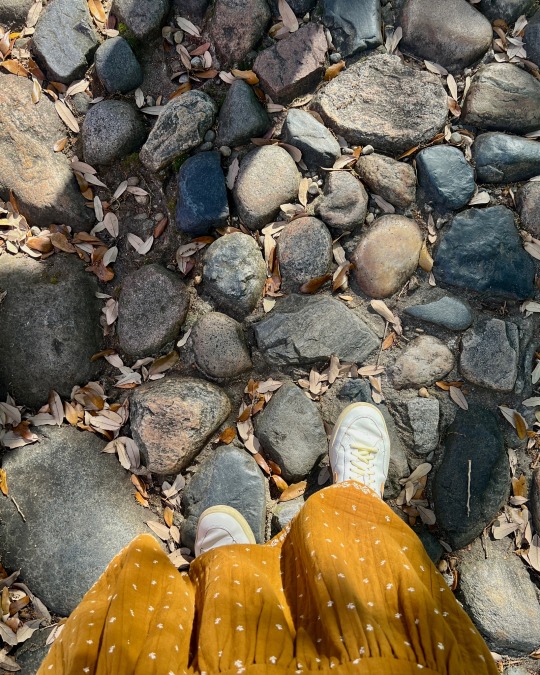
I was in Charleston all weekend, and this is such a good time of year to be there. Everything was in bloom and I got to go on one of our new specialty tours focusing on the architectural history of the 18th century. I also went to magnolia plantation for the first time (the gardens were very beautiful, but I was disappointed in the historical interpretation).
I enjoy solo travel, but there are also plenty of experiences that are better shared, and just make me very aware of how lonely I am. Today was delightful, but I can’t help thinking that it's the kind of delight that is multiplied when shared.
Started reading The Shining for my class but ugh. I just can’t get into it. Reading has been hard lately, my brain has just decided not to. Audiobooks aren’t any better.


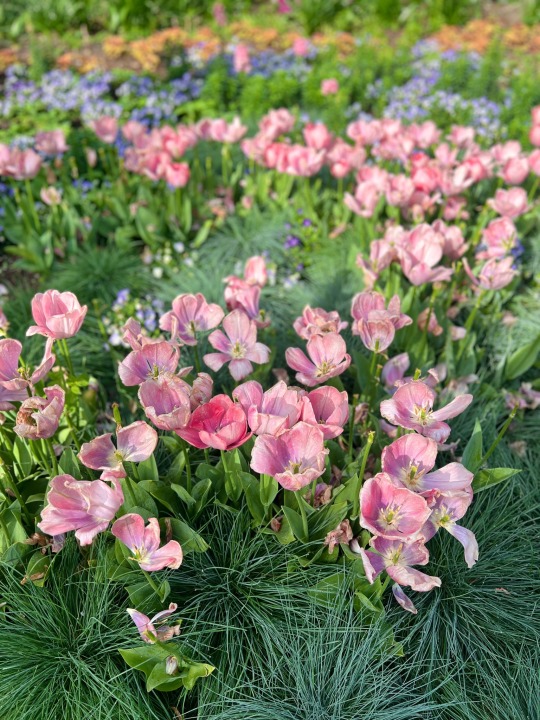
I don’t have so many words right now (for once). But plenty of pictures of things that caught my eye this week.
last week
5 notes
·
View notes
Text
Thess vs Herb Garden Day 85 - Rearrangement
So, as promised, a photo update on my current gardening project. We’ll start with the bedroom this time:
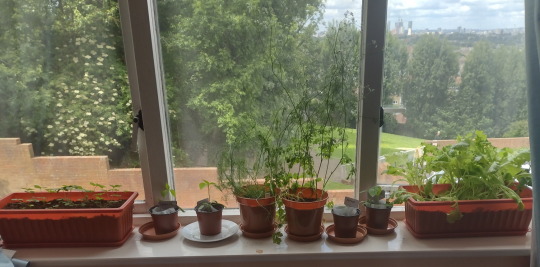
Just the one photo, since it gets the point across. From left to right: alpine strawberries, cayenne peppers, dill, coriander/cilantro (flowering now, keeping it for the seeds), sweet peppers, and lettuce (with a lemon balm plant in the corner which probably needs less lettuce in its way - time for MOAR SALAD).
Moving on, the study, with a little more detail:

This is one of those really horrific stackable planters I was telling you about - the one that resulted in my scissors-related injury. But it’s a good home for parsley, chives, and some of the basil (more on that later). Also pictured: recalcitrant cucumber plant which will not sprout.
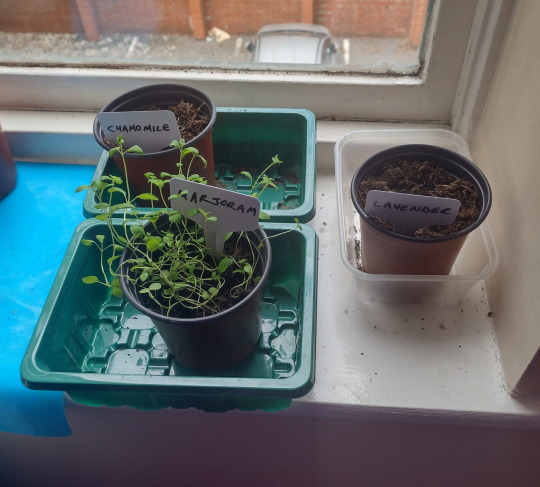
Marjoram’s doing well, sprouting nicely. Planted some chamomile and lavender today; we’ll see how that goes.
And now, the kitchen:
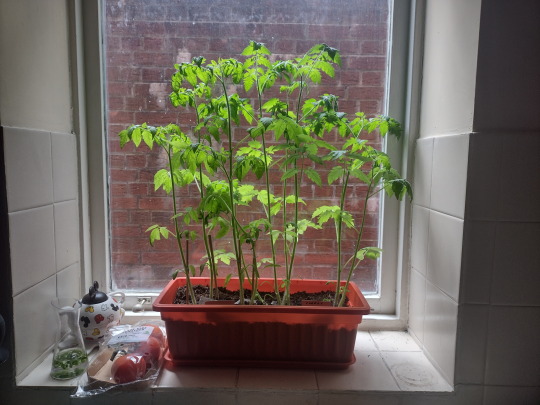
Tomato and cherry tomato plants, and lookit how they grew. See also, my McGuyvering of stakes from chopsticks. I now have actual stakes if I need them, even if they weren’t big enough for what I originally bought them for.
Speaking of ... I hear you asking, “But Thess, you had a lot more herbs last time I looked; where’d everything go?” So I present to you ... the balcony.

It’s arranged as carefully as I can to catch as much sunlight as I get around here, and I can move stuff indoors if it gets too cold or whatever, but it shouldn’t (though saying that, English weather is bullshit). So here’s a bit more detail:

From left to right: oregano, basil, and mint. Basil’s taking some time to dry out because I think I overwatered it a bit. Oregano’s getting a close eye kept on it and comes indoors if it gets below 10 degrees Celcius. Mint is ... everywhere.
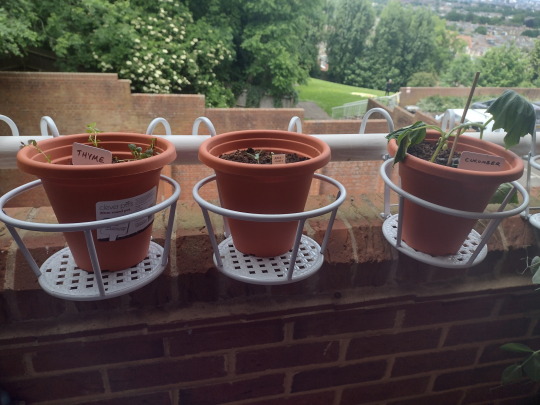
New moves - thyme and rosemary (which are apparently hardy buggers and will survive whatever) and cucumber (looking a little wilted; needed an emergency repotting; should be okay soon, now that its roots have some space).
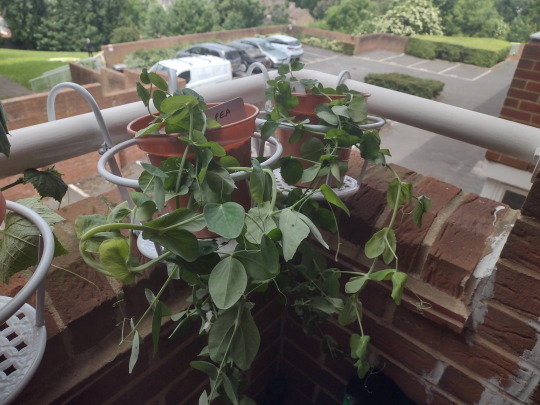
Moving on - peas. Those things grew so well that I had to detangle them the way you do with a necklace chain that’s been tied in knots. Still, it’s doing very well. Evidence:
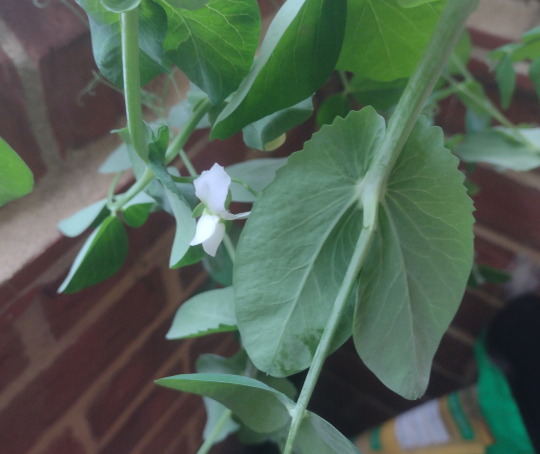
They’re flowering; look! Actually really pretty. I hope the bees enjoy. And, finally:

The potato plants got so big they kind of fell over; I bought stakes but they turned out too small so I’m just leaning them in the corner and hoping the stems don’t snap. The bigger onions are okay; they’re my transplants from grocery store onions so they were a bit further along in the growth cycle than the ones from seeds. They're suppoed to look a bit dried at this stage and should be ready for harvest soon. Carrots and beetroot look happy in their new home, though I am prepared to move them if there’s insufficient room. I should probably seed a few more, but I am starting to have a space issue outdoors. Then again, by the time those ones are ready for transplanting outdoors, these ones that are already outdoors should be ready for harvesting.
So that’s the state of the garden! I won’t be moving the marjoram outside (apparently it is a fussy bitch about temperature) but I’ve got hopes for the chamomile and lavender, and I’m pondering a few more things to plant. Still, I think I’m doing well on the herb front, at least.
So now I’m going to break down the boxes my new bits and bobs came in, dump them with the rest of the recycling, go down to the corner shop, and then just settle down and relax. I have been busy.
5 notes
·
View notes
Text
Harvesting Happiness: Family Farming Projects for Every Season
In a world that often seems hectic and disconnected, there's something profoundly grounding about returning to the roots—literally. Family farming projects offer a unique opportunity to connect with nature, each other, and the rhythm of the seasons. Whether you have a sprawling rural homestead or a tiny urban balcony, there's a farming project suitable for every family, regardless of the season.
Spring: Sprouting New Beginnings
As the earth awakens from winter slumber, spring is the perfect time to kickstart your family farming adventures. Consider starting a vegetable or herb garden. Container gardening can yield a bountiful harvest even if you're limited in space. Get the whole family involved in selecting seeds, preparing the soil, and nurturing the plants as they grow. The satisfaction of harvesting your produce is unmatched.
Another exciting springtime project is raising chickens. Even urban dwellers can often keep a small flock of hens for fresh eggs. Building a coop together fosters teamwork and teaches responsibility. Children love collecting eggs each morning and watching the fluffy chicks grow into clucking adults.
Summer: Cultivating Connection Under the Sun
Summer is a time of abundance, and there's no shortage of family farming projects to dive into. Consider planting a fruit orchard or berry patch. Not only will you enjoy the fruits of your labor for years to come, but picking ripe berries straight from the vine is a joyful experience for children and adults alike.
For those with more space, why not try beekeeping? Not only do bees play a vital role in pollinating plants, but harvesting honey is a sweet reward for your efforts. Beekeeping requires patience and care, making it an excellent opportunity for family bonding and learning about the importance of conservation.
Autumn: Reaping the Rewards
As the days grow shorter and the air turns crisp, it's time to harvest the fruits of your labor. Autumn is the season for preserving through canning, drying, or fermenting. Get the whole family involved in making homemade jams, pickles, and sauces from your garden bounty. Not only does this teach valuable kitchen skills, but it also ensures that your harvest lasts through the winter months.
If you're feeling adventurous, consider planting a pumpkin patch. Carving jack-o'-lanterns is a beloved autumn tradition, and growing your pumpkins adds more meaning to the experience. Plus, roasted pumpkin seeds make for a delicious and nutritious snack.
Winter: Cultivating Creativity Indoors
While the garden may lie dormant outside, winter doesn't have to stop your family farming fun. Indoor gardening offers a way to stay connected to nature even when it's cold and snowy. Set up a hydroponic system to grow fresh herbs and leafy greens year-round. Watching plants thrive under artificial light can be a fascinating science lesson for children.
Another winter project to consider is mushroom cultivation. Many edible mushroom varieties can be grown indoors using kits or homemade substrates. Experimenting with fungi can be educational and delicious, from oyster mushrooms to shiitakes.
Cultivating More Than Crops
Beyond the tangible benefits of fresh produce and homemade goods, family farming projects offer something even more valuable: connection. Working together in the garden fosters communication, cooperation, and a sense of shared accomplishment. It's a chance to slow down, unplug, and appreciate the simple joys of life.
Moreover, engaging in sustainable farming practices teaches children the importance of environmental stewardship. From composting kitchen scraps to using natural pest control methods, every aspect of gardening offers an opportunity to learn about our relationship with the planet.
In a world that often prioritizes busyness and consumerism, family farming projects offer a welcome respite. Whether digging in the dirt or tending to bees, each season brings new opportunities for connection, learning, and growth. So roll up your sleeves, grab a shovel, and start cultivating happiness with your family today. After all, the best memories are often made in the garden.
0 notes
Text
Cork City Libraries Sustainability Blog | Sow…Let’s Grow!
December is the busiest month of the year for many people, from the stress of Christmas shopping to the excitement of finishing school for the little ones, and the all-important winter exams for those in secondary school or college – the garden is the last thought on anyone’s mind...or is it? The garden doesn’t just stop at the front door you know. In this blog I’ve hand-picked some books that we have in stock here in Hollyhill Library that can complement your gardening from how to make Christmas wreaths to what herbs perfectly accompany the Christmas day roast.

Beautiful Wreaths & Garlands: 35 Projects to Decorate your Home for all Seasons & Occasions by Catherine Woram contains pages of stunning ideas on how to bring all that wonderful winter foliage into your indoor space. Using materials that can be found in almost every garden, she shows you how to create beautiful Christmas wreaths that can highlight your fabulous gardening success.

The Homemade Year by Lily Higgins is a wonderful read that I would recommend at any time of the year. She has divided her book by the seasons and has lots of gorgeous recipes and projects especially suited to each one. Winter starts on page 247 and the very first project is a stunning leaf wreath using dried leaves and herbs from the garden. This wreath is slightly less showy than the one in the previous book and would be perfect for those trying to incorporate a little bit of the Danish hygge tradition into their Christmas. On page 255 is a how-to for a facial steam using chamomile and rosemary which can ease congestion – especially handy at this time of year! And on page 289, one of my favourite Christmas activities, instructions for an orange pomander. Now I know that neither oranges nor cloves are particularly common plants to see growing in an Irish garden, but I love this one all the same and for less than the price of cup of coffee, your house can smell like Christmas for weeks. It is a lovely activity to do with your family, or whomever you choose to spend the holidays with. In the picture below you can see the pomanders my housemates and I made together.

Ultimate Christmas: The essential Recipes and Festive Crafts for the Perfect Christmas published by Paragon Books Ltd has lots of festive recipes that you can use to utilise your fruit and veg harvest. Regardless of whether you’re growing to feed a family of six or just have some herbs on your windowsill, this book has recipes that cater to everyone. Potato and parsnip rosti with smoked salmon, sour cream and chives on page 83 is a delicious recipe which uses common veg you may have grown yourself. No matter how small your gardening endeavours may be, there is no doubt that home grown produce adds just a little bit extra to any dish you desire to make. This book also has a small section in the back dedicated to Christmas crafts and here we find another wreath design, this one uses holly leaves which can be found almost anywhere – I pass several bushes on my walk to work every morning!
A Very Vegan Christmas: Plant-Based Recipes for Celebrating in Style by Sam Dixon is all about those plants. This book may be marketed towards vegans but anyone who believes veg deserves a starring role on the table, should most certainly give it a read. I’ve already leafed through this one and I’ll share with you some of my favourites. Maple & pecan stove-top carrots uses the thyme I’ve grown, and I’ll probably throw in some rosemary as well, I feel they really must be used together. Mushroom and chestnut stuffing also uses a host of herbs, and this will absolutely be on my dinner table come Christmas day. Roast butternut squash curry for those in-between days where you’re not quite sure if you can eat another charcuterie board, the recipe also calls for spinach and I’m going to use my rainbow chard instead, the colour will look just stunning.
Happy Christmas everyone from Hollyhill Library!
0 notes
Text
Choosing the Best Seed Starting Trays for Your Garden's Needs
The ideal seed starting trays is a pivotal decision for any gardener, whether you're a seasoned horticulturist or a novice with a green thumb in the making. These unassuming containers play a fundamental role in nurturing the seeds that will eventually blossom into vibrant plants, making them a crucial component of any gardening endeavor. The right seed starting trays can mean the difference between thriving seedlings and disappointing outcomes, as they provide the foundation for healthy root development and early growth. In this guide, we will delve into the key factors to consider when choosing the best seed starting trays to suit your garden's unique requirements. From materials and sizes to design features and drainage systems, we'll explore the essential criteria that will help you make an informed decision. Whether you're embarking on a journey of sustainable food production or simply adding some greenery to your space, understanding how to select the perfect seed starting trays is a crucial step towards gardening success.
Understanding Your Garden's Unique Needs
Every garden is unique, and it's essential to start your journey towards the best seed starting trays by assessing your garden's specific requirements. Consider the climate in your region, the types of plants you intend to grow, and your gardening goals. For instance, if you're nurturing delicate herbs indoors, your tray needs will differ from someone cultivating vegetables outdoors. Take into account the available space, light conditions, and the scale of your gardening project. Understanding your garden's distinct needs will help you make informed choices regarding the type of seed starting trays that will promote the optimal growth and development of your plants.
Materials Matter: Exploring Tray Options
The materials used in seed starting trays can significantly impact your gardening success. Common materials include plastic, peat, or biodegradable options. Plastic trays are durable and reusable but may not be the most environmentally friendly choice. Peat trays are biodegradable but may not last as long. Biodegradable options are eco-friendly but may require careful handling. Exploring these materials and their pros and cons will help you decide which type aligns best with your gardening philosophy and goals.
Size Matters: Selecting the Right Tray Dimensions
Choosing the right tray dimensions is a critical aspect of successful seed starting. The size of your trays should match the available space and the number of seeds you plan to sow. Too small a tray can limit plant growth, while excessively large trays can lead to wasted resources and crowded seedlings. Understanding the dimensions that suit your garden's scale and space will ensure efficient use of resources and create an optimal environment for healthy seedling growth.
Design Features for Efficient Seed Starting
Seed starting trays come in various designs, each with its unique features. Some trays have individual cells for each seed, facilitating easy transplanting. Others come with domed lids to create a mini-greenhouse effect, enhancing humidity and temperature control. Understanding the different design options and their advantages will enable you to choose trays that align with your gardening style and the specific needs of the seeds you're nurturing.
The Importance of Proper Drainage
Proper drainage is a fundamental factor in seed starting success. Excess water can lead to root rot and other fungal issues, while insufficient drainage can cause waterlogged soil. Understanding the importance of drainage and selecting trays with appropriate drainage features or knowing how to enhance drainage will help you create an optimal growing environment for your seeds.
Environmentally Friendly Seed Starting Tray Choices
As environmental consciousness grows, many gardeners seek eco-friendly seed starting tray options. Biodegradable trays made from materials like coconut coir or rice hulls have gained popularity. Additionally, reusing or repurposing household items as seed starting trays can be an environmentally responsible choice. Exploring these sustainable alternatives aligns with eco-conscious gardening practices and reduces your ecological footprint.
Budget Friendly Options for Every Gardener
Gardening doesn't have to break the bank, and there are budget-friendly seed starting tray options available for every gardener. You can make use of recycled materials or choose cost-effective tray materials without compromising on seedling health. By exploring budget-friendly options, you can embark on your gardening journey without straining your finances, making it accessible to gardening enthusiasts of all backgrounds and economic means.
Conclusion
In conclusion, selecting the best seed starting trays for your garden's needs is a pivotal decision that sets the stage for your gardening success. By understanding your garden's unique requirements, exploring different tray materials, considering size and design features, prioritizing proper drainage, and embracing environmentally friendly or budget-conscious options, you can make an informed choice that aligns with your gardening goals and values. Remember that the right seed starting trays are not just containers; they are the nurturing cradles for your future plants. They provide the foundation upon which healthy seedlings can grow, thrive, and eventually flourish in your garden.
0 notes
Text
Gardening Activities for a Fun and Relaxing Happy Hour

Gardening is a great way to connect with nature and de-stress. It's also a fun and engaging activity that can be enjoyed by people of all ages. If you're looking for a way to celebrate your team's happy hour with a unique and memorable experience, consider hosting a virtual DIY gardening activity.
There are many different ways to incorporate gardening into your happy hour. You could have a botanist come and give a presentation on different types of plants, or you could have a team-building activity where everyone plants their own herb garden. You could also have a contest to see who can grow the most beautiful or unusual plant.
No matter how you choose to do it, a virtual DIY gardening activity is a great way to get your team together and have some fun. It's also a great way to learn more about nature and sustainability.

Here are a few ideas for gardening activities that you can do with your team:
Grow your own herbs: Herbs are a great way to add flavor to your food, and they're also easy to grow indoors. You can start with a small herb garden on your kitchen windowsill, or you can plant a larger herb garden in your backyard.
Make a terrarium: A terrarium is a small, enclosed garden that can be grown indoors. Terrariums are a great way to bring the beauty of nature indoors, and they're also a low-maintenance way to get into gardening.
Start a compost pile: Composting is a great way to reduce your environmental impact and create nutrient-rich soil for your plants. You can start a compost pile in your backyard, or you can find a community compost bin near you.
Volunteer at a local garden: There are many great organizations that need volunteers to help with gardening projects. Volunteering at a local garden is a great way to give back to your community and learn more about gardening.
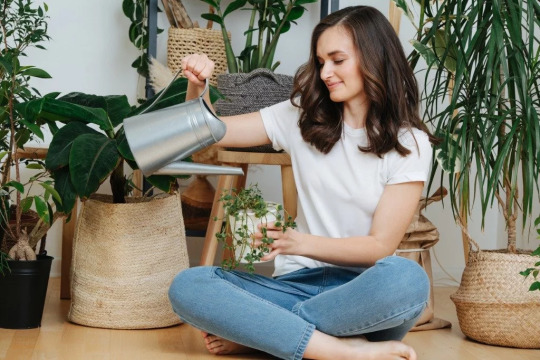
Gardening is a fun and rewarding activity that can be enjoyed by people of all ages. If you're looking for a way to get your team together and have some fun, consider hosting a virtual DIY gardening activity. It's a great way to learn more about nature and sustainability, and it's sure to be a memorable experience for everyone involved.
Here are some additional tips for planning a successful virtual DIY gardening activity:
Choose activities that are appropriate for your team's interests and skill levels.
Provide all of the necessary materials and instructions.
Set up a virtual meeting space where everyone can participate.
Encourage team members to interact with each other and ask questions.
Make it fun!
With a little planning and effort, you can host a virtual DIY gardening activity that your team will love.
0 notes
Text
Your One-Stop Hydroponics Equipment Supplier for Thriving Indoor Gardens

If you're looking for the one-stop Hydroponics Equipment Supplier Central Coast for thriving indoor gardens, look no further than us. We've got everything you need to grow healthy plants and flowers in your home or business—from nutrients systems and growing media to pumps and flow control.
In this article we're going to cover why hydroponics is a great option for growing plants indoors, how it works, what equipment you'll need and how much it costs to get started with your own hydroponic garden project.
Pumps and Flow Control
Pumps are the most important part of a hydroponics system. They move water, which is essential for your plants' health and growth. Pumps can be submersible or external, but either way they will use electricity to run themselves. If you're just starting out with hydroponics and have no idea what kind of pump you need, check out our article on choosing the right type of pump for your indoor garden here!
Pumps can also be used to control flow rate in your system. This allows you to control how much nutrient solution gets delivered at once--a crucial step toward regulating how much nutrients are available at any given time throughout each day (or season).
Flow control valves help regulate this process by allowing you to adjust how much water comes out from one side versus another when two pipes are connected together via T-joints in order for both pipes not only connect but also interact with one another simultaneously without causing any problems down stream due to excessive pressure buildup caused by back pressure caused by too much flow entering simultaneously into those same areas where several outlets converge into one pipe line.
Read More: Best Hydroponics Equipment Supplier Central Coast
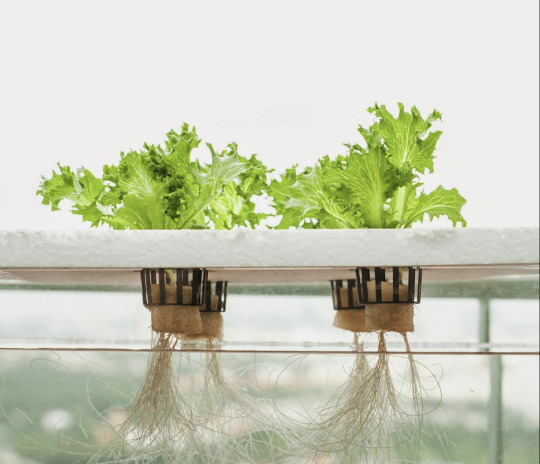
Nutrient systems
We have a wide selection of nutrient systems for hydroponics, aquaponics and aeroponics. We also carry drip irrigation equipment that can be used with any type of growing system you choose.
If you're just starting out or are looking for an upgrade from your current system, we offer a variety of choices in both the basic models as well as those with automated features like sensors and timers to make things easier on you!
Growing Media--Soil-Less Mediums
Soil-less mediums are used for hydroponic gardening. They're made from materials like expanded clay, perlite and vermiculite.
Soil-less mediums have many advantages over soil: they're lightweight; easy to transport; don't need to be replaced as often; don't require fertilizers or pesticides; and can be reused for up to five years.
You can grow more than flowers with a hydroponics system.
You can grow more than flowers with a hydroponic system. A wide variety of plants and vegetables can be grown using this method, including herbs, fruits and veggies. Hydroponics is also ideal for growing in small spaces or even indoors during the winter months when outdoor conditions may not be ideal for planting.
The best part about it? You don't need much space! If you want to grow your own food but don't have access to land or just don't want the hassle of tending an entire garden plot (or maybe even if you do), then hydroponics might just be right up your alley.
We hope this Hydroponics Equipment Supplier Central Coast article has helped you understand how hydroponics works, and why it's such a great way to grow plants indoors.
Source: https://nutrifloaustralia.blogspot.com/2023/05/your-one-stop-hydroponics-equipment.html
#hydroponic grow tent central coast#hydroponics equipment supplier central coast#hydroponics equipment supplier
0 notes
Text
How To Find The Right Seeds Online For Your Garden?
Gardening is a fun way to spend some time outdoors and create something beautiful that you can enjoy. Many people get started by purchasing seeds from their local nursery or hardware store, but there are many advantages to buying your Best seeds online instead.
Not only does this allow you access to a wider selection of varieties than what’s available at local stores, but it also allows you to buy them in bulk without having more than you need on hand. In this article we’ll look at how to find the right seed company and variety for your garden project so that it comes out beautifully!

Decide what type of seeds you want
Once you've decided what type of seeds you want to grow, it's time to decide where they will be planted and how many plants you want. If it's just one plant that can be grown indoors or outdoors (and if so, where), then this part is easy. However, if it's several different types of plants that require different environments (i.e., herbs vs. tomatoes), then deciding on a location becomes more complicated.
If you're going to be growing your plants indoors, then you'll need a place that has adequate light and ventilation. If you don't have a green thumb, then consider purchasing a grow light or two (or three) to help with this task.
Select the seed variety
Select the seed variety that's best suited for your area, climate and soil type.
In areas with a short growing season, it's important to choose varieties that can be planted early in spring or late in fall. The germination rate of these seeds may be lower than those of other varieties but they will give you greater success if you're trying to grow anything outdoors during these times of year (or indoors).
Seeds that are said to "thrive" under certain conditions might not do so well in other climates or soil types--but there are always exceptions! Be sure to check reviews from actual gardeners using them before making a purchase decision.
Buy them in bulk
Buying seeds in bulk can save you money and help ensure that you have enough to get your garden started. The more seeds you buy at once, the less each individual packet will cost. It also helps if you want to grow multiple varieties of plants since it means that there isn't as much chance of running out of any one type of seed during planting season.
If possible, consider buying from local farmers or seed banks who sell their own homegrown products--this way, not only do you get access to unique varieties but also support small businesses!
Conclusion
The best way to find the right seeds online is by doing your homework. You should research what type of seeds you want, look at the different varieties available and decide which ones will work best for your garden. Once you have decided on a particular type or brand then it's time for some serious shopping!
0 notes
Text
10 Unbelievable Uses Of White Vinegar In The Garden
10 Unbelievable Uses Of White Vinegar In The Garden
CLICK TO READ MORE

Cantitoe Corners: Martha's Vegetable Garden
From early spring to fall's first frost, Martha's vegetable garden yields not only delicious crops but also clever and innovative techniques. Take a peek at Martha's garden in all its glory.

14 Common Raised Bed Mistakes You Must Avoid
If you're thinking about putting in raised beds this year, save yourself some major headaches and read this article first.
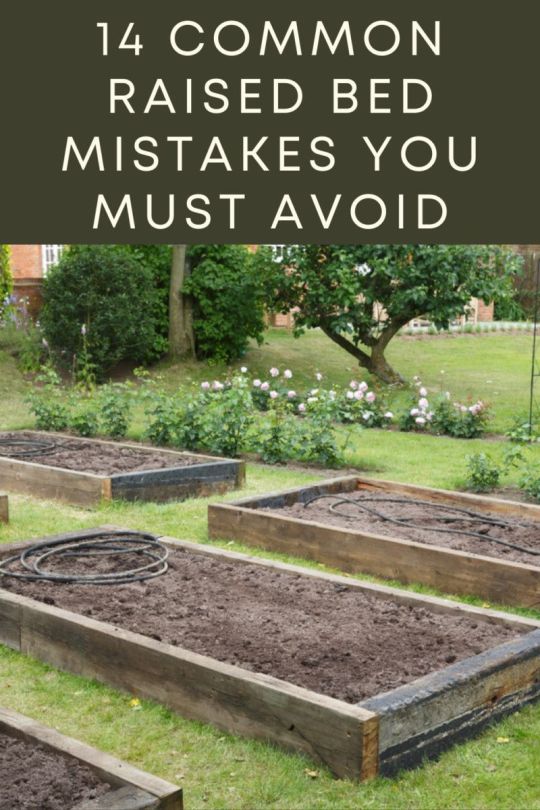
9 Common Seed Starting Mistakes To Avoid ~ Homestead and Chill

How To Grow Buckets Full Of Bell Peppers + Health Benefits & Recipes
There is nothing more beautiful than a basket full of homegrown bell peppers. I have been growing bell peppers for the last twenty years and have never been disappointed. There are many reasons to love bell peppers. They are really easy to grow, loaded with nutritional value and taste amazing raw and cooked.

40 Stunning Vegetable Garden Design Ideas Perfect For Beginners (39- 40 Stunni..., #Beginn...

12 Plants To Intercrop With Tomatoes - Better Harvest and Soil
Ever wondered what should you plant under your tomato plants? Learn more about intercropping and plant these vegetables and herbs for enhanced soil quality and better tomato harvest.
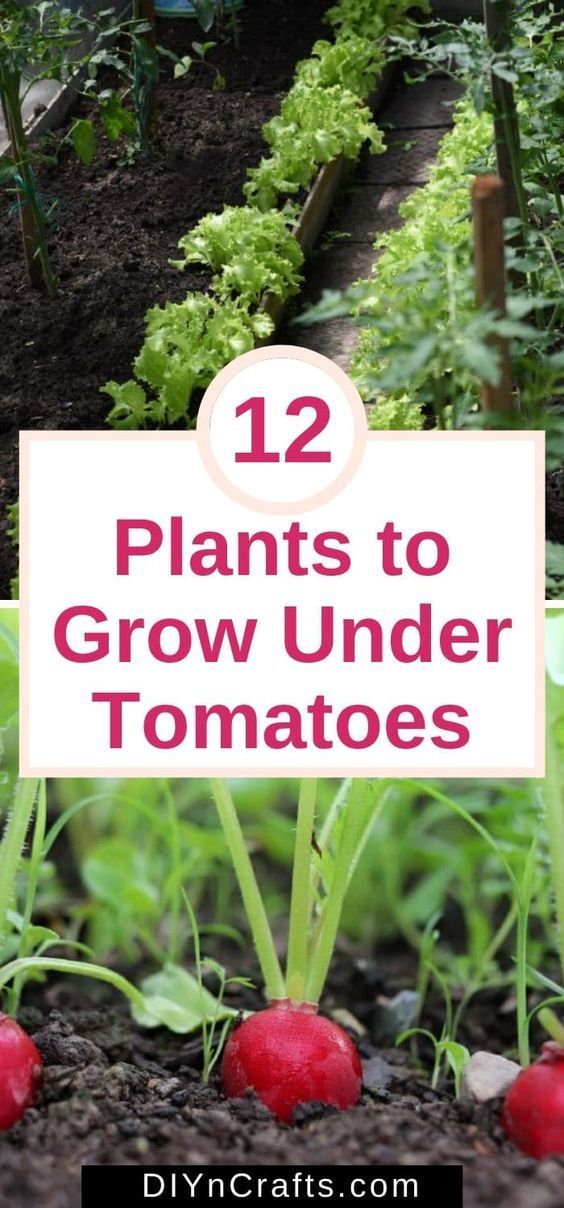
Stop Buying Garlic - Here's The Best Way To Grow An Endless Supply Right At Home
Here's the best way to grow garlic at home.

Raised Garden Beds - Brilliant DIY and Kits for Lovely and Protected Gardens.
Over 50 of the BEST Garden Ideas & DIY Yard Projects - everything from yard art, planters, garden stones, green houses, & more!
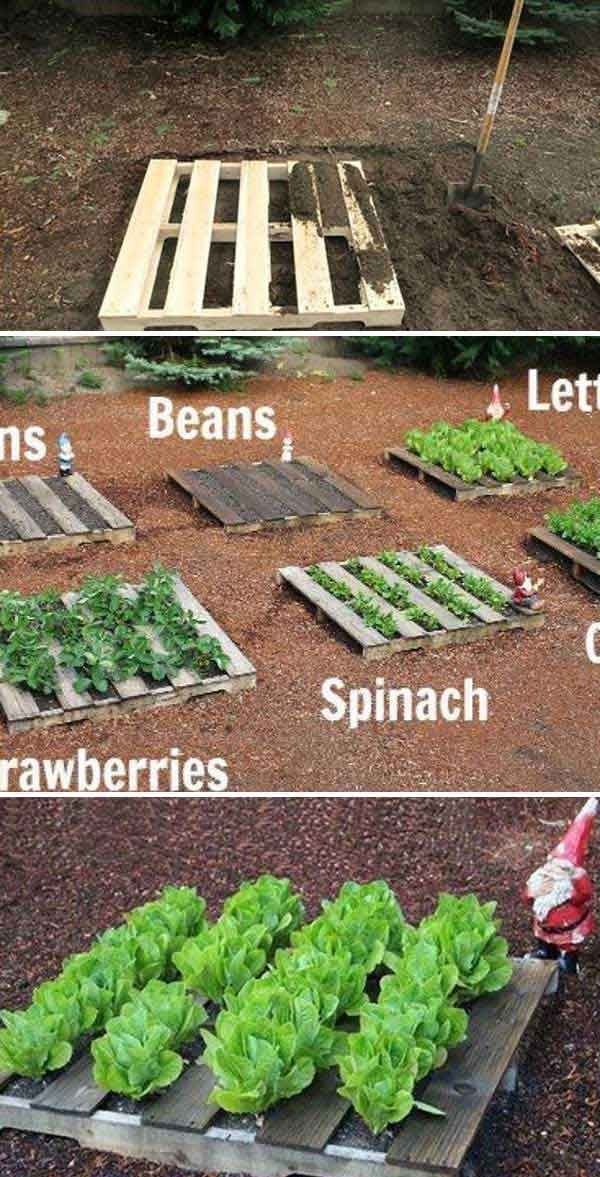
Most Common Seed Starting Problems- and How to Fix Them
Trouble shoot your common seed starting problems. Learn about the top seed starting problems and how to fix them for good!

Vertical Gardening: 10 Vegetables that Love to Climb
Vertical vegetable gardening saves space, helps avoid pests and disease, makes harvesting easier, and adds beauty to your garden.

9 Flowers You Should Grow in Your Vegetable Garden
Learn which flowers should be planted in your vegetable garden. Companion planting flowers and vegetables, yeilds better, healthier plants.
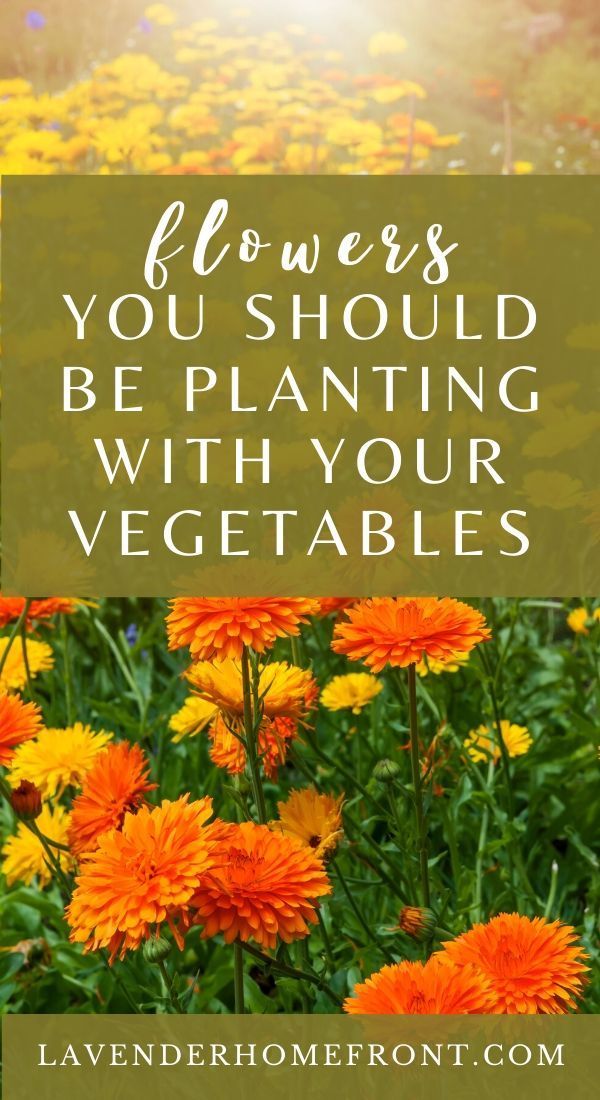
16 Best Vegetables That Grow Best In Shallow Container - Container Vegetable Gardening
Vegetables with a fibrous root system are more suitable for shallow containers. The fibrous root system is consist of small branching roots, this root system does not have a big central root that grows vertically downward.

12 Best Veggies & Herbs to Regrow from Kitchen Scraps
Best vegetables & herbs to regrow from kitchen scraps in water or soil. Start a windowsill garden indoors, or grow foods using grocery lettuce, beets, etc!

0 notes
Text
Wednesday 1 March
CLASS SITE VISIT
The Temperate Glasshouse showcases a collection of temperate climate plants that turn with the seasons. A key mission for this session was to find 1-2 plants to focus on in research.


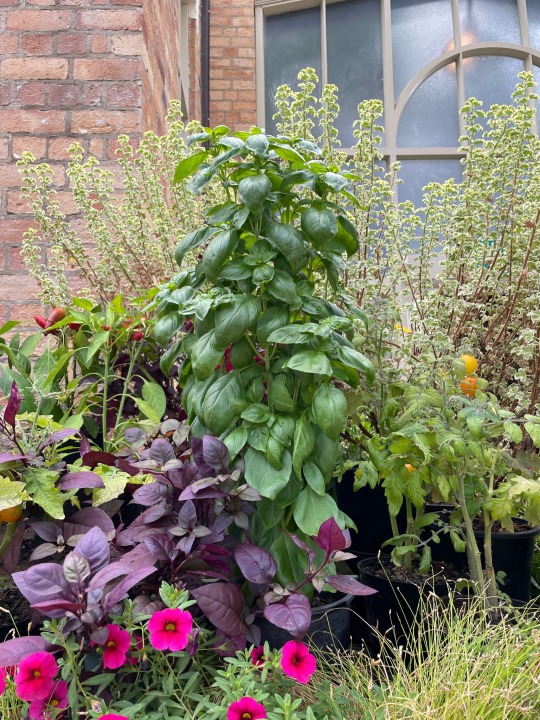
As a lover of food, I was naturally drawn to these vegetable plants - tomatoes, peppers and basil. They're such humble NZ summer vegetables we are all familiar with so it was interesting and fun to spot them between the others that were much bold and extravagant looking.
I found this seasonality chart on The Produce Company website that shows the specific months of their season and how similar they're aligned to each other - right in season throughout mid-spring to late autumn, also around in the winter, but supplies are limited.

They are small-sized, easy-to-grow vegetables, that many of us also grow in our own home gardens. I actually have cherry tomatoes growing in my own garden right now. We've had them for a couple years since we started just for fun (probably during lockdown). We just saved a couple cherry tomatoes that we got from the supermarket, scooped out the insides and that was what we planted.



I remember it was so funny how it actually worked and the plant actually grew so well. We had it in a small container indoors for the first few weeks while it bloomed and started sprouting then replanted it in the garden. From there it got really taller and thicker and the vines started to spread out, and within a month or two I think we already had some tomatoes growing. It's really low maintenance in that we've never replanted or taken much special care of it since, but over the years it seems to have spread and reproduced on its own - from the over-riped ones that fall and split onto the soil.
This is bringing back so many good memories of my childhood, we used to have all sorts of other things that my mum liked to grow. Gardening was such a fun activity at home during summer holidays and what I think also gave me the love of food and cooking that I now have. There's just something about being able to use your own herbs and veggies when you're cooking at home.
---
Incorporating food as either a key or partial element in my design is a way I think would allow me to really enjoy this project.
Blooming thought: A design event celebrating seasonal produce.
Amano is a place that came to mind when I thought of this idea of 'celebrating seasonal ingredients'. According to what's fresh and seasonal in the market they consistently and regularly refresh their menu. I have also seen that they display those fresh produce in bowls around the restaurant as intentional decor.


showcasing seasonal local produce throughout the year
recipes and demonstrating cooking shows to promote home cooking
food as decor
native plants and vegetables from the indigenous times
food is one of the best ingredients in bringing people together - connecting different cultures and generations.
To find historical aspects embedded in the site to connect with this idea:
what did gardening and farming look like at that time?
what kind of produce?
change in peoples’ diet after colonisation - foreign foods brought in by the British
0 notes
Text
CHS Brief Notes
11.01.23
Challenge for City Dwellers:
While those living in the countryside or suburbs
may have less access to sustainable transport
and eco-friendly products, their larger spaces
mean more compost bins, garden space to grow
their own food and farmers’ markets to buy
produce straight from the source.
City dwellers, on the other hand, tend to have
less space and no gardens - and so a
self-sufficient lifestyle can feel out of reach.
Brief:
- Fictional brand
- Sustainability
- City dwellers
- ‘Grow your own greens kits’ for city dwellers
- Limited space
- Existing brands: Urban Plant Growers, Boskee, Click & Grow
- Variety: microgreens, herbs, small veg
- Growing kits outside windows, pots that hang, small indoor stands
- Indoor gardening easy, in-built light and watering technology
- Every plant kit bought, 1 tree is planted
The Brand:
- To make city life a little greener everyday
- Easy growing kits, do it all for you
- Organic, tasty food, free of pests, nutritious
- Recyclable packaging, zero emission delivery
- Inspires and fuels to take action and make world a better place
- Straightforward, positive, energetic, tenacious
Target Audience:
- Londoners, busy lifestyle, living in small spaces
- Listens to Spotify podcasts on commute to work
- Watches Netflix and Amazon Prime on weekends
- Scrolls through TikTok and Instagram in free time, enjoys relatable London content, finding inspiration for places to visit things to do
- Small change can make big difference
- Take the faff out of gardening
- Kit fits perfectly for your space
- Get busy Londoners, living in small spaces
- Who are actively looking to be more sustainable, but feel like big lifestyle changes are out of their reach
- Sees this project as an easy way to do their bit for the planet, while enjoying delicious greens
- Showing them they don’t need extra time or space to start self-sufficiency journey
Deliverables:
- Brand name and identity
- New logo, colour palette, imagery etc, rationale
- Demonstrate how it comes to life, website and social media
- Launch communications, Instagram Ads
Research:
- Competitors, how do they present themselves, talk about their products etc.
- How do consumers talk about sustainability and self-sufficiency, blogs, forums, youtube videos etc
- Look at sustainability in other categories
0 notes
Text
Buy Vertical Garden Online
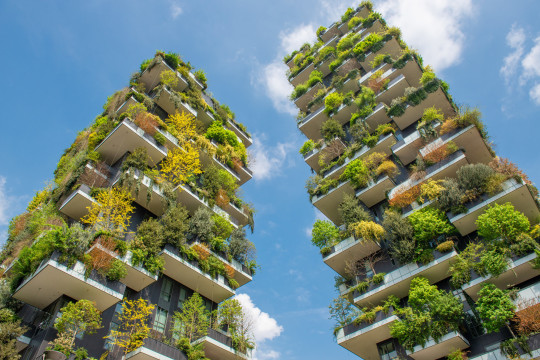
Vertical gardens are a wonderful way to save energy, conserve water, and bring fresh air and colour to your indoor or outdoor space. A vertical garden can even be a great alternative to a potted plant. With a vertical garden, you don't have to worry about soil, pests, or bulky plants. You can put flowers, herbs, or vegetables in a small pot and grow them on the wall. This type of gardening is also a great way to create a natural habitat.
One of the first vertical garden planters to develop a successful vertical garden was Mr Stacky. They have been selling hundreds of thousands of units since they started in 2000. This is because the company combines food production and philanthropy. Their aim is to help build capacity in developing communities, schools, and refugee camps. The company sells through various hydroponic outlets, making them a trusted brand to buy vertical garden online.
When shopping for a vertical garden, keep in mind that you need to use the right materials to create the best possible design. For example, the right containers can make all the difference. These containers can come from recycled items such as old shoe organizers or coco coir basket liners. It is also a good idea to choose a pot that has a hole at the bottom to allow water to drain. If you don't have access to a hose, you can fill it with gravel to add more drainage.
Aside from having the right materials, it is a good idea to know how large the plants you intend to grow will be. Most of these plants prefer a pot that is about 8 inches tall, but some will tolerate smaller pots. However, you should remember that perennials should be divided when they outgrow their containers.
You can find a wide selection of freestanding vertical garden kits at Nurserylive. These include planters, arbors, trellis, and more. Each kit is available in a variety of colors and styles to suit your decorating needs. Whether you want to create a lush, colorful display, or you are a more minimalist home owner, you are sure to find a vertical garden kit that meets your needs.
Some popular plants for a vertical garden are herbs and edible flowers. Herbs and lettuces tend to grow well in smaller pots and containers. They are also very compact. In fact, they are often the perfect plants to grow in pocket-sized felt planters.
As with any other outdoor project, it is important to plan for the weather. It is usually better to start a new garden during the warmer months. During winter, however, it is a good idea to cover up the plants with plastic or glass in order to protect them from freezing. Also, you may want to purchase a dark-colored pot for the same reason. Dark-colored pots absorb heat and dry the soil more quickly. Alternatively, you may want to install stones or other drainage options in the pot to enhance soil drainage. To familiarize yourself more with this topic, it is best that you check out this post: https://en.wikipedia.org/wiki/Green_wall.
0 notes
Text
Adarsh Park Heights – Best Apartments in Gunjur
Adarsh Park Heights is a new luxury apartment project by Adarsh Group in East Bangalore. The residences are spread across 21 acres of land. These apartments come in a variety of designs and sizes to fit your lifestyle.
It is a premium 2 and 3-BHK apartment project in Varthur, Bangalore. It is located close to the IT hubs of Whitefield, ITPL, and Sarjapur Outer Ring Road. The development boasts many luxurious amenities.
The apartment floors are designed with high-quality building materials, and the apartments are furnished with modern amenities. These amenities include a swimming pool, multipurpose hall, clubhouse, sports facilities, gym, tennis court, etc. This enclave is located at Gunjur in East Bangalore.
It is a gated community with many amenities and is a great place to live. It has a convenient location and a nice design and it's also a great place for those who are looking to be located in a place that's earthquake resistant.
Adarsh Developers is a reputed builder in India. They started their journey as a small venture in the year 1988, and have since carved a niche for themselves in the real estate industry. Their projects have a long history of satisfied clients.
The project is located in a lush green environment surrounded by a variety of trees. Moreover, it offers great connectivity. It is situated near Whitefield ORR, Marathahalli, and Gunjur, and also has a good connection to other major suburbs of Bangalore.

It is an exclusive and prestigious residential enclave with the best modern facilities. Designed by leading architects and interior decorators, it is an apt reflection of urban chic living. The development includes an indoor swimming pool, skating rink, multi-purpose hall, gymnasium, and much more. Residents also have the opportunity to enjoy the company of like-minded people.
The project is close to Whitefield and the ORR area. In addition, it is also close to the IT parks of ITPL. Also, it is situated near Krupanidhi Residential PU College. Furthermore, it is located in a green and peaceful neighborhood.
These are some of the reasons why Adarsh Park Heights is a perfect investment opportunity. It has apartments that offer premium 2 and 3-bedroom layouts. There are many world-class amenities and facilities available as part of this project.
Moreover, it also offers a good range of clubhouse facilities. There is a multi-purpose hall, a basketball court, a swimming pool, and a gym. You can also enjoy a relaxing spa. Other amenities include an herb garden, a butterfly garden, and a stepped bamboo grove.
With the increase in the incidence of earthquakes in India, more efforts were made to develop earthquake-resistant buildings and infrastructure. Several initiatives were taken by the Government of India and other organizations to formulate guidelines for designing and building earthquake-resistant structures.
India was one of the first countries to adopt a formal approach to developing earthquake engineering. In the late 1950s and 1960s, earthquake engineering in India started to become institutionalized. Although it has made significant progress, it has still not managed to avoid earthquakes altogether.
Adarsh Park Heights is a newly launched residential development by Adarsh Developers. The developer has created a gated community with aesthetically pleasing architecture. This is a luxury development with apartments that are fully equipped with world-class amenities.
The project is located in Gunjur, East Bengaluru. It is connected to Sarjapur Outer Ring Road and Whitefield. As a result, it is close to major IT hubs in the city. Also, it is within proximity to reputable schools, hospitals, colleges, and business centers.
The houses are spacious with elegant interiors and classic exteriors. They feature large windows to let in plenty of natural light. In addition, they provide sufficient ventilation and circulation to ensure a healthy environment for the family. Moreover, they include round-the-clock security.
0 notes
Text
Hydroponic Farming Cost Start From $50
Hydroponic Farming Cost Start From $50
Hydroponic Farming Cost. A hydroponic garden typically costs between $300 and $1,000 to build.
Hydroponic gardens don't need soil to grow plants like a typical garden does; instead, they do so by using mineral nutrient solutions in combination with water and other nutrients.
However, it takes some time to figure out how much a hydroponic garden will cost before you install one.
This guide will assist you in estimating the cost of creating a hydroponic garden based on your financial constraints.
image of Hydroponic Farming Cost
What Are the Prices for Different Systems of Hydroponic Gardens?
The hydroponic technology you select is by far the biggest factor in determining how much it will cost you to start a hydroponic garden.
Hydroponic System with Low Tech
The most cost-effective choice is a low-tech hydroponic setup. A low-tech system will work if your only objective is to grow a small herb garden, even though it may not have any fancy features. One of these systems will cost you anywhere from $50 to $200.
Hydroponic System of Medium Technology
The next best option for a hydroponic system that works better and has more features is to choose one that is already installed. These hydroponic systems range in price from $300 to $1,000 and frequently include nice extras like lighting or water flow that can be controlled remotely.
A sophisticated hydroponic system
High-tech systems are the best option if you want to create the best hydroponic garden. For farmers who want to use hydroponic technology to produce a high yield of produce, high-tech hydroponic systems have been developed. This will consequently cost you more than $10,000.
What Would a Hydroponic Garden Cost Close to You?
Starting a hydroponic garden has the advantage that costs don't significantly change depending on where you live. How much you're willing to spend on technology will have the biggest impact on your overall costs.
While the cost of the technology itself won't change depending on where you live, it's important to note that installation costs for your hydroponic garden could increase based on where you live and the scope of your project.
For instance, installing a hydroponic garden in the prosperous and pricey city of San Francisco will probably cost more than it would in a more rural part of California.
The cost of maintaining a small hydroponic garden in the city may even be less than that of a large one in the countryside. To get a price on your hydroponic landscaping project, we advise looking in your neighborhood.
What Hydroponic Gardens Are Available in My Price Range?
We've done the math to make it simple for you to determine how much you can afford to spend on your new hydroponic garden:
$50 to $200
You can install a small hydroponic herb garden that can grow three to nine small herbs for this price range.
$200 to $500
With a hydroponic garden in this price range, you should be able to grow 12 to 24 plants.
$500 to $1,000
You can examine the features of more expensive hydroponic technologies in this price range. Your budget can reasonably support a modest but impressive hydroponic garden, whether it has changing lights or a cascading flow.
$1,000 to $5,000
Small farmers can anticipate spending in this price range if they want to invest in hydroponic technologies. With this budget, you can build a hydroponic garden that is either indoors or outdoors, but you might not be able to produce enough for mass production.
$5,000 to $10,000
You can afford a hydroponic farming setup that yields lots of plants on this budget.
How Much Does It Cost to Begin Your Own Hydroponic Garden?
Want to DIY your hydroponics installation to save money? You can almost certainly guarantee a reduction in your overall costs if you take the cost of hiring a professional out of the equation. Remember that the amount you can save will depend on your skill level and capacity to handle it on your own.
An estimation of how much you might spend on supplies, equipment, and time is given below:
- Materials: In addition to the hydroponic technology you've chosen, which can cost $50 to $10,000, you'll need a reservoir container, which can cost between $50 and $300, and reasonably priced plant pots. With a ready-made hydroponic garden that requires little assembly, you might be able to avoid these extra costs.
- Supplies for maintenance: It's crucial to keep your hydroponic garden maintained if you want to keep your plants healthy and alive. A pH meter, measuring cups, trimmers, substrate, nutrients, adequate lighting, and other tools are typical gardening supplies. Considering that the price of meters alone can range from $20 to $300, budget an additional $200 to $400.
- Time: The time you spent doing it yourself and caring for your garden should also be taken into account. Setting up a typical hydroponic garden can take hours if you are unfamiliar with the technique. Similar to this, even an experienced DIYer might find themselves taking on a large project that requires several days or weeks to plan and construct.
Cost Breakdown for Hydroponic Gardens
When figuring out how much your hydroponic garden will cost, there is a lot of information to consider. The costs are broken down as follows:
Hydroponic Garden Types
Your hydroponic garden's technology quality will have a significant impact on how much it costs. A hydroponic system costs anywhere from $50 to $10,000.
Getting Professional Help
A skilled hydroponics landscaper may bill from $100 to $1,000 or more, depending on your location and the size of your project.
cost of maintenance
You should take into account the cost of maintaining your garden. The type of garden that is productive depends on the environment, lighting, and resources. A small hydroponic garden typically requires 6% of its total cost for maintenance, whereas a large garden may require 13% on average.
By Type, How Much Does It Cost to Begin a Hydroponic Garden?
The kind of hydroponic system you install will also affect how much starting a hydroponic garden will cost. These are the top five hydroponic systems today:
Wick system: The most straightforward and straightforward hydroponic system to set up is the wick system. They cost between $300 and $1,000, are ready-made, and are categorized as middle-tech systems.
Ebb and flow system: The ebb and flow system is a traditional but intermediate hydroponic system. The setup fee for this one ranges from $500 to $1,000. Through a pump system, nutrients are delivered to the roots to keep them moist.
Water culture system: The water culture system uses water and nutrients to hydrate the roots of your plants, as the name suggests. This is accomplished by controlling the plants using a floating platform, an air pump, and an air stone. The price range for a water culture system is $300–$1,000.
Drip system: This system typically costs $300 to $1,000. Micro-irrigation systems called drip systems use water to drip nutrient solutions onto your plants.
System of aeroponics: This system is more sophisticated. While you can build your own DIY aeroponics system for less than $200, the average person looking to build a high-yielding garden will start out with a $1,000 aeroponics system.
What Elements Affect the Price of Building a Hydroponic Garden?
Additional cost considerations to bear in mind are as follows:
- Garden size
- the standard of the technology
- Whether it's bespoke or ready-made
- How much you're prepared to spend on upkeep
FAQ Hydroponic Farming Cost
How much does it cost to set up hydroponics?
5 lakhs to 8 lakhs to the total cost of the hydroponic farm. The final cost for setting up a hydroponic farm in one acre of land will be Rs. 110 lakhs to Rs. 150 lakhs, excluding the price of land.
Is hydroponic profitable?
Hydroponic farming is highly profitable. It is an example of high yield just in a small place in any season or weather condition. The hydroponic vegetables are highly accurate and balanced in fibers, minerals, and vitamins. It is the first method of doing soil-less farming/cultivation.
Is it cheaper to grow hydroponics?
Is Hydroponics Cheaper Than Soil? Hydroponic gardening is cheaper than soil gardening; however, it requires an initial investment. You can expect to notice quicker plant growth and better plant production than plants in regular soil gardening.
What is the most profitable hydroponic crop to grow?
What are the 9 Most Profitable Crops to Grow Hydroponically Basil. Basil is one of the most loved herbs in India- it has a great fragrance and adds the perfect flavor to any cuisine. Cilantro. Lettuce. Spinach. Peppers. Spring Onion. Mint. Cucumber.
How much land is required for hydroponics?
It is estimated that 20 square meters of land can produce 2 kg of vegetables which can cost around 110- 120 USD.
Does hydroponics use a lot of electricity?
Pumps and other machines used in hydroponic gardening consume relatively little electricity when compared to lighting costs. Still, even the least-used devices will add to utility bills. Ultimately, the consumer inherits the high electricity costs of hydroponic gardening.
Is hydroponics safe to eat?
Food Safety The high humidity of hydroponic greenhouses can make these vegetables susceptible to salmonella contamination. Salmonella can cause food poisoning if ingested, but washing vegetables thoroughly before eating them can often remove any of the bacteria that might be on the surface.
How do I start a hydroponic farm?
How can you efficiently learn hydroponic farming in a matter of weeks? Short-term and long-term government/private institutional trainings. Farm-based training. Online courses with expert-guidance. Know your crops. Know your market. Know your options.
Is hydroponic growing faster than soil?
Hydroponic plants can grow 40-50 percent faster and can produce 30 percent more than the plants growing in soil. A combination of fast growth rate and a controlled environment creates predictable harvests on a consistent basis.
What are 5 disadvantages of hydroponics?
5 Disadvantages of Hydroponics Expensive to set up. Compared to a traditional garden, a hydroponics system is more expensive to acquire and build. Vulnerable to power outages. Requires constant monitoring and maintenance. Waterborne diseases. Problems affect plants quicker.
Is hydroponic better than soil?
According to statistics, plants that grow in a hydroponic set up are healthier, more nutritious, grow quickly but they also yield more. If you compare the yield of hydroponic plants with soil-grown plants, crops produced hydroponically yields 20-25% more than crops produced in the soil.
Is hydroponics good for health?
Hydroponics is not only beneficial to your health, but it is also beneficial to the environment. As previously stated, it is a more sustainable method of growing vegetables, so it has a lower environmental impact. Hydroponic gardens can also help to improve air quality.
How much we can earn from hydroponics?
In India a 4ft by 5ft planter can generate anywhere between Rs. 2000 to Rs. 10,000 a month depending on what you grow, your efficiency and techniques.
What is the fastest growing plant in hydroponics?
Mustard greens, Swiss chard, spinach, kale and watercress are all fast-growing plants that will thrive in a hydroponic system, and typically you can begin harvesting them within a month of planting.
Is PVC pipe safe for hydroponics?
Yes, PVC is a food-safe material for gardens and aquaponics aquaponics Aquaponics is a food production system that couples aquaculture (raising aquatic animals such as fish, crayfish, snails or prawns in tanks) with the hydroponics (cultivating plants in water) whereby the nutrient-rich aquaculture water is fed to hydroponically grown plants, where nitrifying bacteria convert ammonia into ...
Read the full article
0 notes
Text
I'm going to have fresh basil if it fucking kills me
0 notes